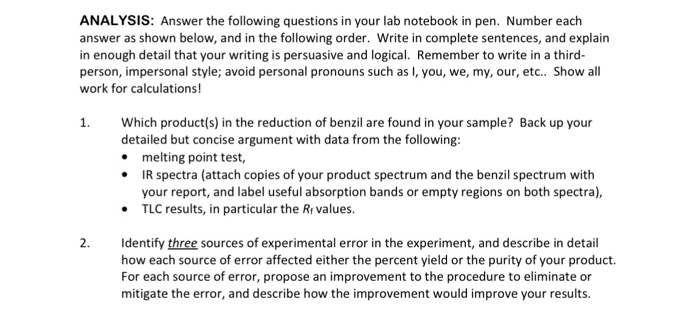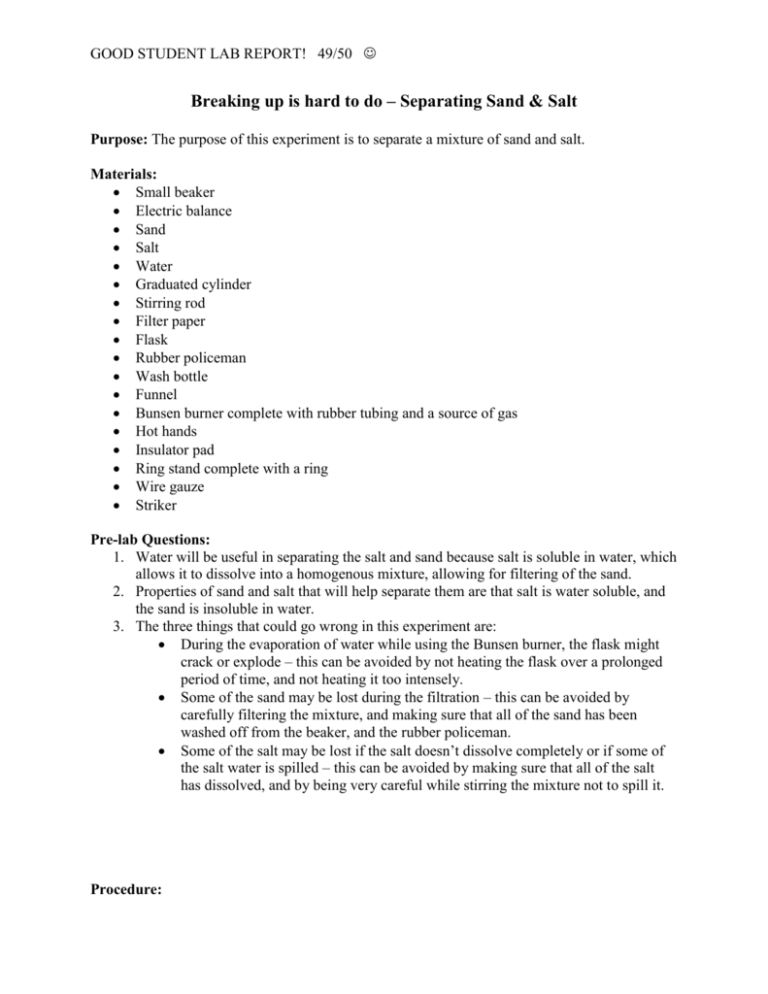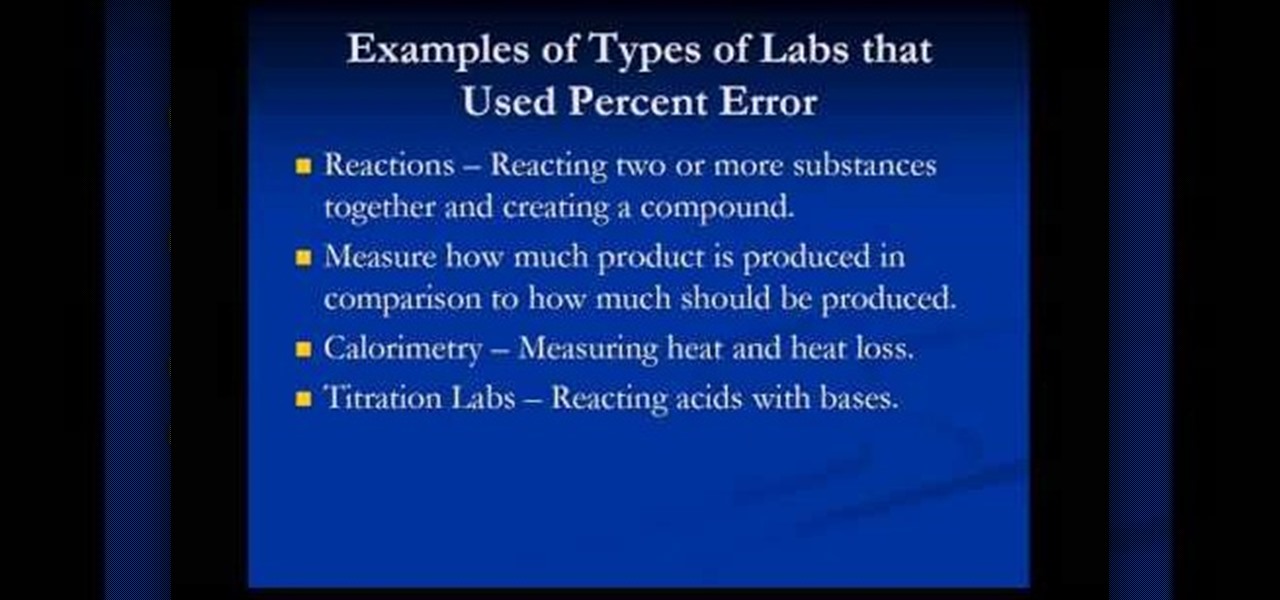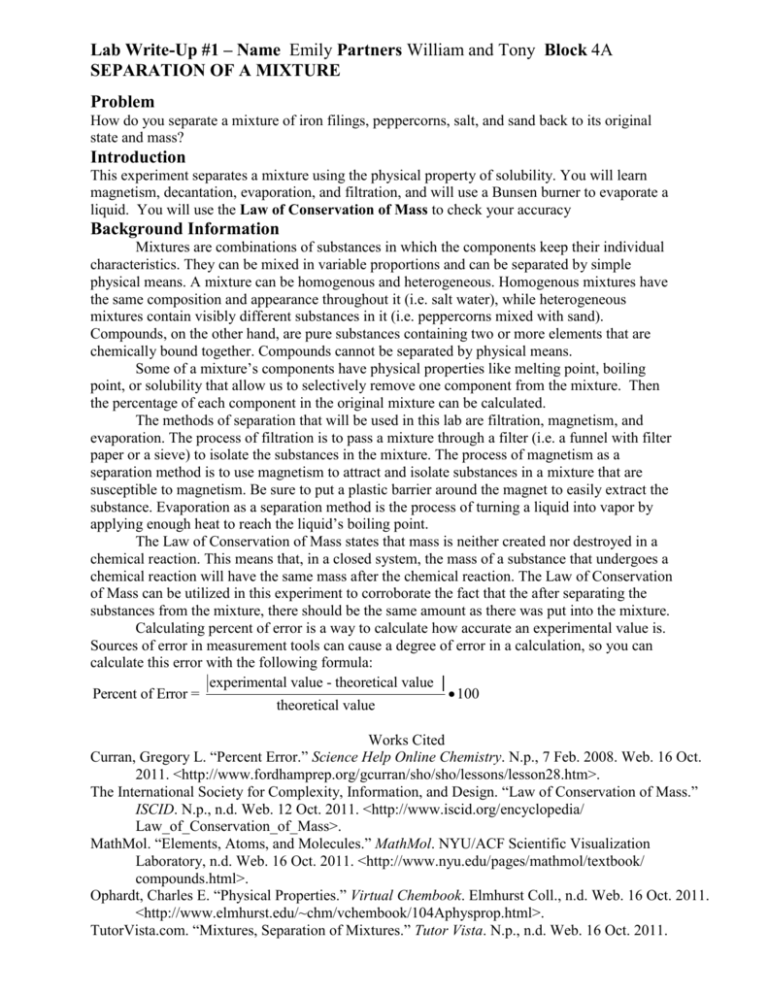Sources of Error in Filtration Experiment
We used water as the solvent. Filter the salt water out leaving the insoluble products sifted out.

Solved Hi Could You Help Me With Analysis Question Number 2 Chegg Com
Some of them are typical human errors that can be limited by sticking to lab procedures but as long as there is a human operator involved they will be never completely.

. The most common type. Environmental errors can also occur inside the lab. Foaming fouling corrosion solvent degradation and losses deposition undesired side reactions and impacts on downstream process operations.
Also using large 20 or 25 mL single volume pipettes means smaller relative errors. The solid is retrieved by a filtration process either gravity filtration or vacuum filtration both shown below. EEEEEEEEEEE 2KIO3aq SrNO32aq Sr1032H2Os 2KNO3aq Filtration Processes.
100 mL graduated cylinder marked every 1 mL. For instance several chemists might get different answers when measuring a piece of rope or rubber band if they do not know what the tension is supposed to be. Answer 1 of 2.
Some of the issues caused by contamination include. Some errors in the chemistry lab result from an unclear definition or expectation of what the experiment is supposed to record. The theoretical yield can be simply calculated froma knowledge of the stoichiometry of the reaction s involved in the preparation.
The results indicate that that current practice may need to be reviewed if important contamination errors are to be controlled. Because the salt was soluble in water while the sand was not we were able to filter out the majority of the salt and water from the solution and leave the sand behind making it possible for us to find out the amount of sand that was. To remove insoluble impurities carry put hot filtration.
Systematic errors can not be eliminated by averaging In principle they can always be eliminated by changing the way in which the experiment was done. TWGraham Solomons Craig B. Answer 1 of 7.
To a scientist the definition of error is in some cases different from the normal use of this term. Put the mixture into the boiling water allowing the salt to dissolve. Digital electronic balance that can be read to 001 g.
Errors such as moistening of the inside surfaces of the gauge splashing of rainwater from the collector and pouring of water into the already filled bucket during an intense rain can only be corrected by some correction factor. Finally there are thousands of possible random errors that cant be adjusted for. Place acid into water and bring to boil while adding 1ml portions of water until all the crystals are dissolved.
These techniques were covered in the laboratory text and video materials. An error in chemistry still often means a. Add a small amount of decolorizing carbon to remove colour.
The purpose of the lab was to purify Phthalic acid through recrystallization. Mechanism of the reaction of benzaldehyde and acetophenone CONCLUSION The product yield from this experiment is 3-nitrobenzaldehyde. Errors from nominal or variation with frequency of either the source output impedance or load impedance will have an effect on the signal level developed across the load.
Experimental preparations of compounds usually follow the standard methodology ie. It is not easy to discuss the idea of systematic and random errors without referring to the procedure of an experiment. You have access to this article Please wait.
And place the filter paper in the flask. These are errors caused by the way in which the experiment was conducted. All these factors may impair the measured result and ways and means are known to test and eliminate them.
In practice there are other sources of error such as environmental effects on photometer and sample temperature line voltage fluctuations vibrations contamination or heating of the sample by the photometer. For almost any chemical process industries CPI plant contamination is a reality that can cause numerous associated and often chronic problems. Fryhle Organic Chemistry Asia John Wiley and Sons2011.
Titration is a quite sensitive analytical method that lets us determine an unknown concentration of a chemical in solution by introducing a known concentration of another chemical. Several factors can cause errors in titration findings including misreading volum. Up to 24 cash back Another method of physical separation that we used to separate the sand salt and iron mixture was filtration.
High frequency signal sources including oscilloscope calibrators have 50Ω outputs and are calibrated in terms of the level developed across a correctly terminated load. The percentage yield that we obtained from this experiment is 5968 with the melting point 144C. Some possible sources of errors in the lab includes instrumental or observational errors.
In other words they are caused by the design of the system. Here is a procedure for a simple experiment to measure the density of rubbing alcohol iso-propanol. The final percentage yield is calculated from actual yieldtheoretical yield x 100.
Unfortunately regardless of how well laid out the experiment is and how careful the person conducting the experiment follows the steps mistakes and errors are unavoidable. Place one gram of mixture in a filter paper. Up to 24 cash back Digital scale.

Good Student Sand Salt Lab Report

Solved Explain At Least Two Sources Of Error In This Experiment That Could Have Affected Your Results 1 Pt Your Instructor Will Assume That Random Or Human Error Sources Of Error Were Minimized

How To Calculate Percent Error In Chemistry Lab Activities Math Wonderhowto

No comments for "Sources of Error in Filtration Experiment"
Post a Comment